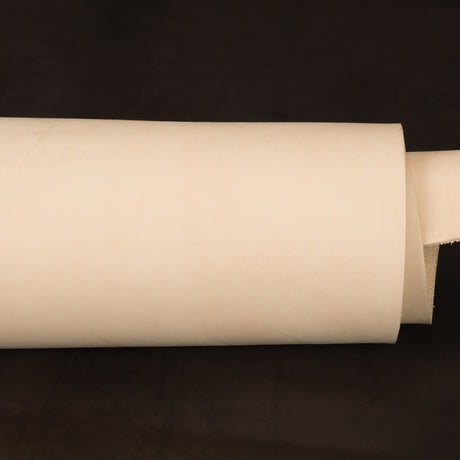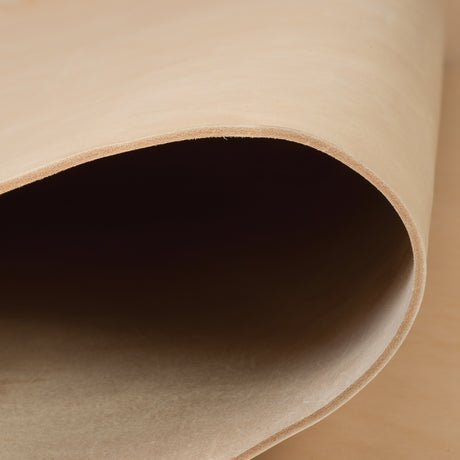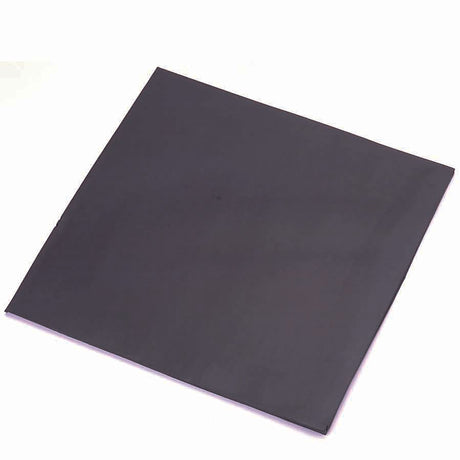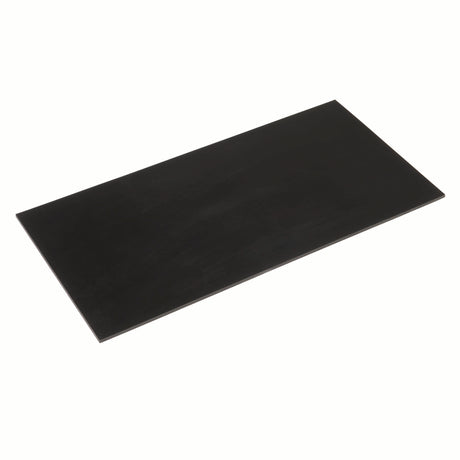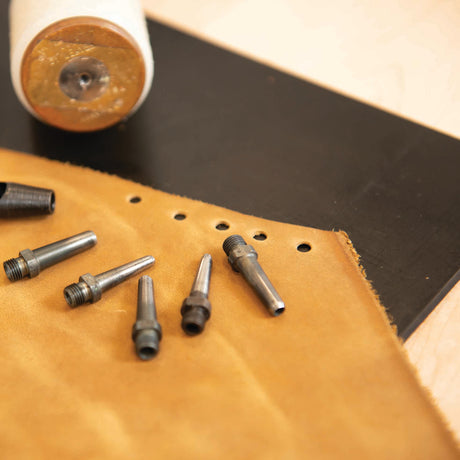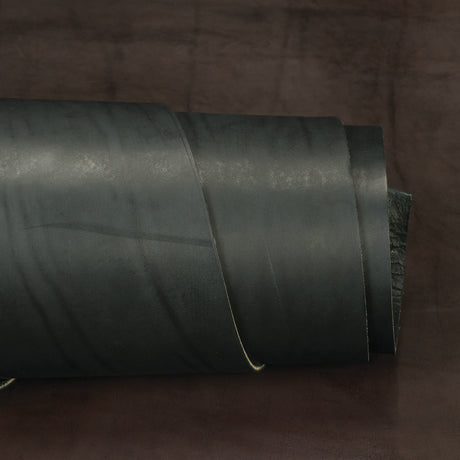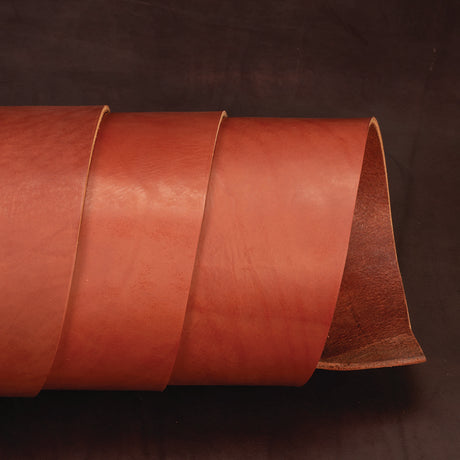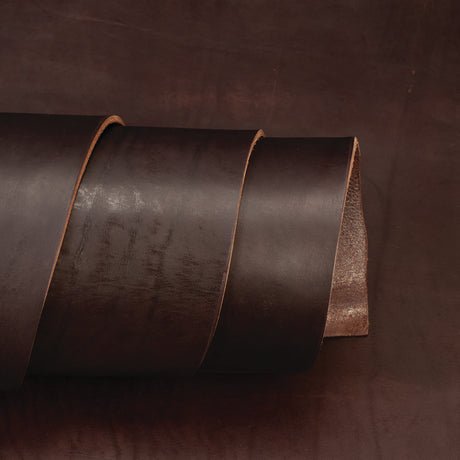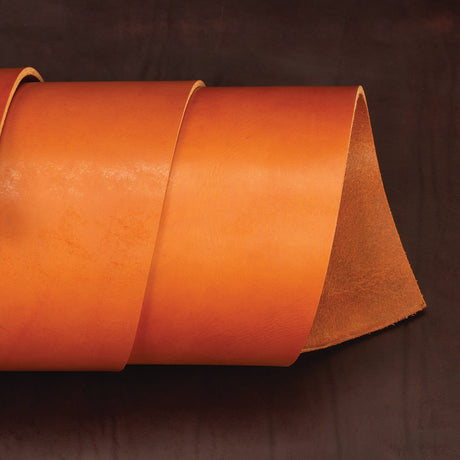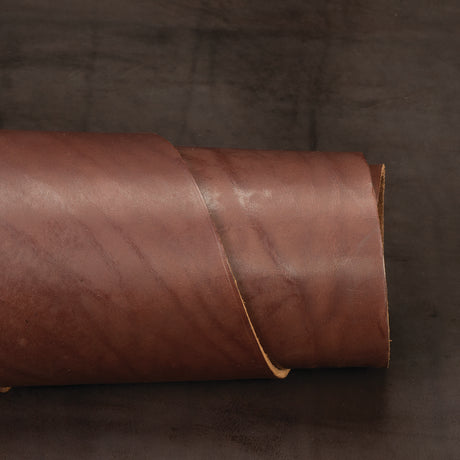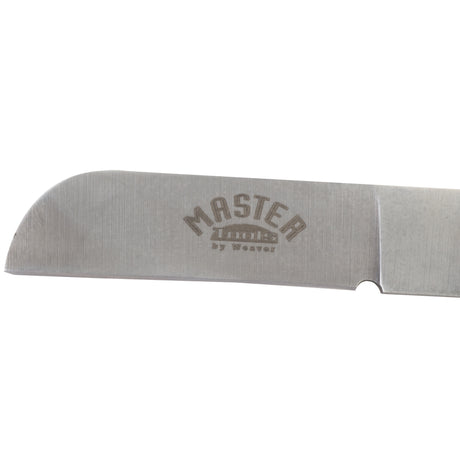How To Make Leather Straps - Beginners Welcome

Creating seriously stylish straps is only a few cuts away!
Well, saddle up and hold on tight because we're about to embark on a wild ride of leather crafting fun! In this article, we'll teach you how to make leather straps.
From selecting the perfect hide to wielding your trusty tools, we've got you covered. So, whether you're looking to fashion a sleek guitar strap, a rustic belt, or a fashionable bag handle, loads of knowledge await you.
Let's get our hands dirty, minds inspired, and straps crafted in a way that will make you proud.
Which Strap Cutter Should You Use? Slice and Dice Like a Pro!
Step right up, leather enthusiasts! If there's one tool that deserves a standing ovation in your workshop, it's the indispensable strap cutter. Cue the applause!
A Leathercrafter's Dream: The Wooden Strap Cutter

When it comes to effortlessly learning how to cut leather straps, the wooden strap cutter takes center stage. Imagine a world where cutting straps is a breeze, and each slice is as precise as can be. With this marvel of a tool, you'll be crafting flawless belts, bags, and more in no time.
Hold on tight, folks!
Before we delve into the glory of the wooden strap cutter, let's shine a spotlight on the incredible draw gauge. Picture a sturdy, high-quality tool that allows you to adjust the gauge width with a simple twist of the handle. It's the epitome of efficiency, making it a worthy investment if you're diving into the world of strap cutting.

Crafters' Top Pick
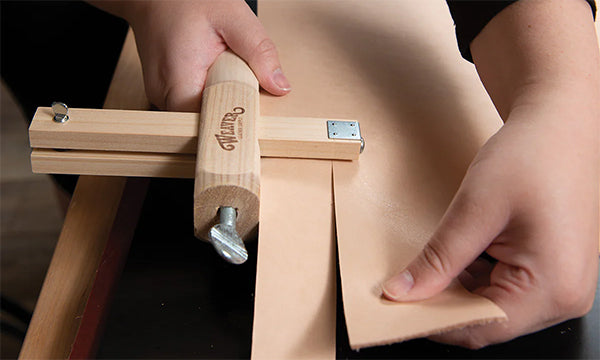
As leather crafters ourselves, we can't help but swoon over the wooden strap cutter. This versatile wonder can handle straps ranging from a mere 1/8" up to a whopping 4" in width.
But wait, there's more!
With its upper crossbar, this tool brings a whole new level of precision to your leather cutting game. With high-quality, budget-friendly, sharp, and easily replaceable blades, they'll keep your crafting dreams afloat!
The Wooden Strap Cutter: Your Leathercrafting Soulmate
This trusty tool is comfortable to use, with sharp blades that are both inexpensive and easy to replace. We can't help but sing its praises, as this durable tool rarely requires blade changes and offers reliable performance for the long haul. In fact, our most recent wooden strap cutter stuck around in our shop for an astonishing 20 years!
Talk about longevity and value for your hard-earned pennies.
Adjusting the width of your strap is a breeze with the wooden strap cutter's handy screw on top. With just a few twists you can customize your strap to the perfect width. But, what about changing the blades? Fear not, we've got you covered with two methods to master this task.
Method One
Let's start with the first method.
- Loosen the screw at the top of the handle and simply take out the cross arm.
- Then, loosen the two screws on the side of the cross arm enough to allow the blade to slip out smoothly from the side.
- Inside, you'll see two slots where the blade fits snugly. Make sure the cutting edge faces the measurements on the outside of the cross arm, and gently insert the blade until you feel it slightly poking out. But beware, these blades are sharp! Don't cut yourself.
- Once the blade is in place, tighten one screw, then repeat the process on the other side.
- Finally, give those screws a good tightening, and you're good to go!
Method Two
If you're feeling adventurous, here's another way to change the blade.
- Loosen the screws enough to release the blade, and at the bottom of the cross arm, you'll find a small screw that keeps the two arms parallel.
- Open it slightly, allowing the arms to swing apart. Now, you can easily remove the blade. It's like a little blade-changing dance!
- Tighten everything back up, and you're all set.
So, strap-cutting maestros, the wooden strap cutter is here to revolutionize your leather crafting experience. It's a worthy investment that will serve you for years to come.
Get The Most Out Of Your Wooden Strap Cutter
Let's talk a little more about this tool's cross arm and handle.
Pay attention, especially if you're new to these cutters. One side of the handle has an indent, the other side is flat. Align the blade with the indent when reinserting the cross arm. Incorrect placement leads to frustrating catches and wondering why it won't glide smoothly.
Avoid the hassle by getting the blade placement right from the start! With the cross arm properly inserted, hold it in your dominant hand, measurements facing you. Pull the arm to your desired width, say 1.5" (the standard size), and tighten the large screw at the bottom.
Pro tip:
For extra security, place the screw's flat face on your worktable and give it a gentle extra turn. Now, your cutter won't fall apart during your DIY bag strap project! Time to unleash the cutting prowess of the wooden strap cutter! This tool is your new best friend.
It turns double shoulders or single bends into perfectly-sized leather belt blanks in just two minutes. And the best part? Cutting your own straps puts a smile on your face and money in your pocket!
Cut Like A Seasoned Pro
First things first, you need a straight edge on your leather, and our secret weapon for this task is the strap cutter. Set the cutting width to a snug 1", and here comes the game-changing technique: instead of pushing the cutter through the leather like a rookie, start the cut and then grab a tab of leather at the top.
Give it a gentle pull to the left, avoiding any need to force the cutter into the leather. Voila! You've just unlocked the secret to achieving a straight cut every single time. It's easy, it's fast, and now you can effortlessly create even and consistent straps from the rest of your leather stash.
Now, here's a nifty tip for strapping from a smaller piece of leather. Get cozy with your leather strap right up against your body, hold the strap cutter on the outside, and smoothly pull the leather through the cutter while using your body as a stabilizing force. It's all about maintaining control and ensuring those straps come out just the way you want them.
Circumventing The Struggle Of Soft Leather
No worries, we've got a workaround for you. Simply position the wooden strap cutter right on the end of your leather and give it a gentle pull. You want the slightest cut that you can see because, let's face it, the leather can be a bit unruly and might not cooperate easily.
But don't worry, we won't let a soft edge ruin your strap-cutting adventure. Take a knife and make a tiny 0.5" cut, just enough to get past that pesky soft edge and enable a smooth and successful cut for your strap. Problem solved, and you're back in the game!
When it comes to leather, body is everything. While a softer leather like our Redrock pull-up leather may not be ideal for making straps, a firmer leather like our English bridle leather is here to save the day. With its nice body and thickness, strapping becomes a breeze.
Embrace the different characteristics of your leather and choose the perfect type for your strap-cutting endeavors.
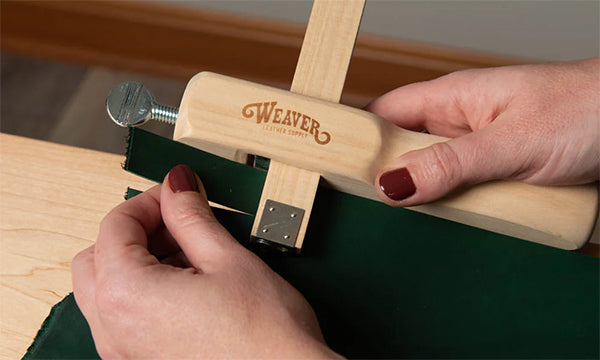
The Secret To Cutting Clean Edges
EVERY. SINGLE. TIME.
As newcomers to leather crafting, you may have burning questions about achieving precise cuts. Fear not, for we have the answers to elevate your skills!
Let's tackle your first question…
1. How to cut a consistent line?
Start with a reliable cutting surface like Poundo Board for stability. Use a straight edge with non-slip tape and a sharp blade. The focus of your first pass should be to create an indent. Move your hand down the straight edge to prevent drift. For longer leather, drop your knife inside the cut, align the straight edge, and continue. Remember to maintain a low blade angle and apply gentle pressure for the second pass. It's just that simple!
Now, onto question two…
2. How to cut straps, especially belt straps?
If you don't have a wooden strap cutter yet, you can use 1.5" wide aluminum bar stock from your local hardware store and add non-slip tape to the back. Align it with the leather edge for a perfect strap. Alternately, we highly recommend investing in a wooden strap cutter. This versatile tool makes strap cutting a breeze, especially for belts.
Lastly, question three…
3. How to cut thin leather without rippling?
Let's take 1.5 oz. leather as an example. Position the straight edge against the edge of the leather firmly. Ensure a consistent and clean cutting surface and use a sharp blade. Using these techniques will give you clean, ripple-free cuts on even the thinnest leather.
Start Saving Money With DIY Leather Straps
It's official! You've learned the essential techniques for making leather straps. From cutting clean and consistent lines to mastering the proper use of a wooden strap cutter, you now have the skills to create beautiful and professional-looking straps for your projects.
Remember to stay safe, get creative, and enjoy the rewarding process of crafting with leather!

